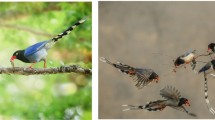Abstract
To address the issues of curvature discontinuity and terminal tire non-return in the parallel parking of autonomous vehicles, a novel parallel parking path planning method based on the combination of the quintic polynomial curve and an improved sigmoid function was proposed. First, a vehicle kinematic model was established. Second, considering the position, front wheel angle, and yaw angle constraints during the parking process, a hybrid superimposed curve was designed. The parking path planning problem was converted into an optimal control problem, with the maximum curvature and curvature at both ends as objective functions, and the parameters were optimized using the simulated annealing algorithm. Subsequently, for path tracking control, the simulated annealing algorithm was used to optimize the prediction time horizon of the model predictive control algorithm. Finally, a series of actual vehicle experiments were conducted based on the Apollo Autonomous Driving Developer Suite, and the effectiveness of the proposed path planning method was validated. Therefore, this method can provide a certain reference for automatic parking path planning technology.





















Similar content being viewed by others
Data availability
The data are available from the corresponding author on reasonable request.
References
Cao, Y., Yan, J., Li, X., & Cao, L. (2023). Path search method for automatic parking system based on improved hybrid A* algorithm. Automotive Technology, 06, 37–41.
Chen, Q., Gan, L., Chen, B., Liu, Q., & Zhang, X. (2023). Parallel parking path planning based on improved arctangent function optimization. International Journal of Automotive Technology, 24, 23–33.
Chen, X., Lan, F., & Chen, J. (2021). Autonomous parking path planning based on improved deep reinforcement learning. Journal of Chongqing University of Technology (natural Science), 35(07), 17–27.
Erno, H., Csaba, H. and Peter, K. (2019). Novel pure-pursuit trajectory following approaches and their practical applications// 2019 1st IEEE International Conference on Gridding and Polytope Based Modeling and Control. IEEE 597–602
Gong, J., Liu, K., & Qi, J. (2020). Second edition of model predictive control for unmanned vehicles. Beijing Institute of Technology Press.
Helene, V., Sebastien, G., Nicoleta, M., & Said, M. (2012). Geometric path planning for automatic parallel parking in tiny spots. IFAC Proceedings Volumes, 45(24), 36–42.
Li, C., Jiang, H., Ma, S., Jiang, S., & Li, Y. (2020). Automatic parking path planning and tracking control research for intelligent vehicles. Applied Sciences, 10(24), 9100.
Liu, C. (2022). Research on vehicle parking space recognition and path planning for automatic parking. Chongqing Jiaotong University.
Naitik, N., & Maulin, J. (2018). An intelligent fuzzy based hybrid approach for parallel parking in dynamic environment-science direct. Procedia Computer Science, 133, 82–91.
Ren, B., Wang, X., Deng, W., Nan, J., Zong, R., & Ding, J. (2022). Automatic parking path optimization method based on hybrid A* and variable radius RS curves. China Journal of Highway and Transport, 35(07), 317–327.
Shin, H., Kim, M., Baek, S., Crane, C., & Kim, J. (2022). Perpendicular parking path generation and optimal path tracking algorithm for auto-parking of trailers. International Journal of Control, Automation and Systems, 20, 3006–3018.
Su, B., Yang, J., Li, L., & Wang, Y. (2019). Secondary parallel automatic parking of endpoint regionalization based on genetic algorithm. Cluster Computing, 22(03), 7515–7523.
Tang, C., Yang, J., & Wang, K. (2019). Three-layer structural mode of elevated cities and urban spatial development. Chinese Journal of Underground Space and Engineering, 15(03), 637–642.
Wang, W., & Hou, Z. (2022). An automatic parking scheme based on model-free adaptive control. Control and Decision, 37(08), 2056–2066.
Xiong, Z., Yang, W., Ding, K., Liang, F., & Zheng, L. (2017). Research on automatic parking algorithm based on preview fuzzy control. Journal of Chongqing University of Technology (natural Science), 31(02), 14–22.
Xu, Q., Xu, J., Hu, Y., Chen, H. and Zhang, X. (2024). Trajectory optimization of robotic arms based on improved simulated annealing genetic algorithm. Journal of System Simulation 1–10
Yu, L., Hou, Z., Wu, B., Cai, Y., & Hu, Z. (2023). Experimental design and evaluation of vertical parking path planning and tracking for unmanned vehicles. Experimental Technology and Management, 40, 55–64156.
Yu, L., Wang, X., Wu, B., Hou, Z., & Wu, Y. (2022). Optimization and tracking of parallel parking path planning for unmanned vehicles. Journal of Jiangsu University (natural Science Edition), 43(05), 519–523.
Zhang, J., Zhou, S., Liu, Y., Guo, C., & Zhao, J. (2022). Autonomous valet parking path planning based on improved rapidly-exploring random tree. Journal of Hunan University (natural Sciences), 49(05), 194–200.
Zhang, W., & Xiao, J. (2021). Application of improved RRT algorithm in path planning of intelligent vehicle in complex environment. China Journal of Highway and Transport, 34(03), 225–234.
Zhao, B., Jia, F., Cao, Y., Sun, Y., & Liu, Y. (2022a). Research on artificial potential field path planning based on simulated annealing algorithm. Computer Engineering and Science, 44(04), 746–752.
Zhao, X., Zhao, Y., Kang, Y., Chen, Z., & Yang, S. (2022b). A multi-UAV collaborative verification path planning method for moving ships. Science, Technology and Engineering, 22(28), 12518–12524.
Acknowledgements
This research was supported by the Shandong Province graduate quality professional degree teaching case library project (Project No. SDYAL2023026), China University of Petroleum graduate education and teaching reform project (Project No. YJG2022036) and China University of Petroleum Graduate course demonstration course construction project (Project No. UPCYKS-2023-02).
Author information
Authors and Affiliations
Corresponding author
Additional information
Publisher's Note
Springer Nature remains neutral with regard to jurisdictional claims in published maps and institutional affiliations.
Rights and permissions
Springer Nature or its licensor (e.g. a society or other partner) holds exclusive rights to this article under a publishing agreement with the author(s) or other rightsholder(s); author self-archiving of the accepted manuscript version of this article is solely governed by the terms of such publishing agreement and applicable law.
About this article
Cite this article
Yu, L., Cai, Y., Feng, X. et al. Parallel Parking Path Planning and Tracking Control Based on Simulated Annealing Algorithm. Int.J Automot. Technol. (2024). https://doi.org/10.1007/s12239-024-00087-7
Received:
Revised:
Accepted:
Published:
DOI: https://doi.org/10.1007/s12239-024-00087-7




